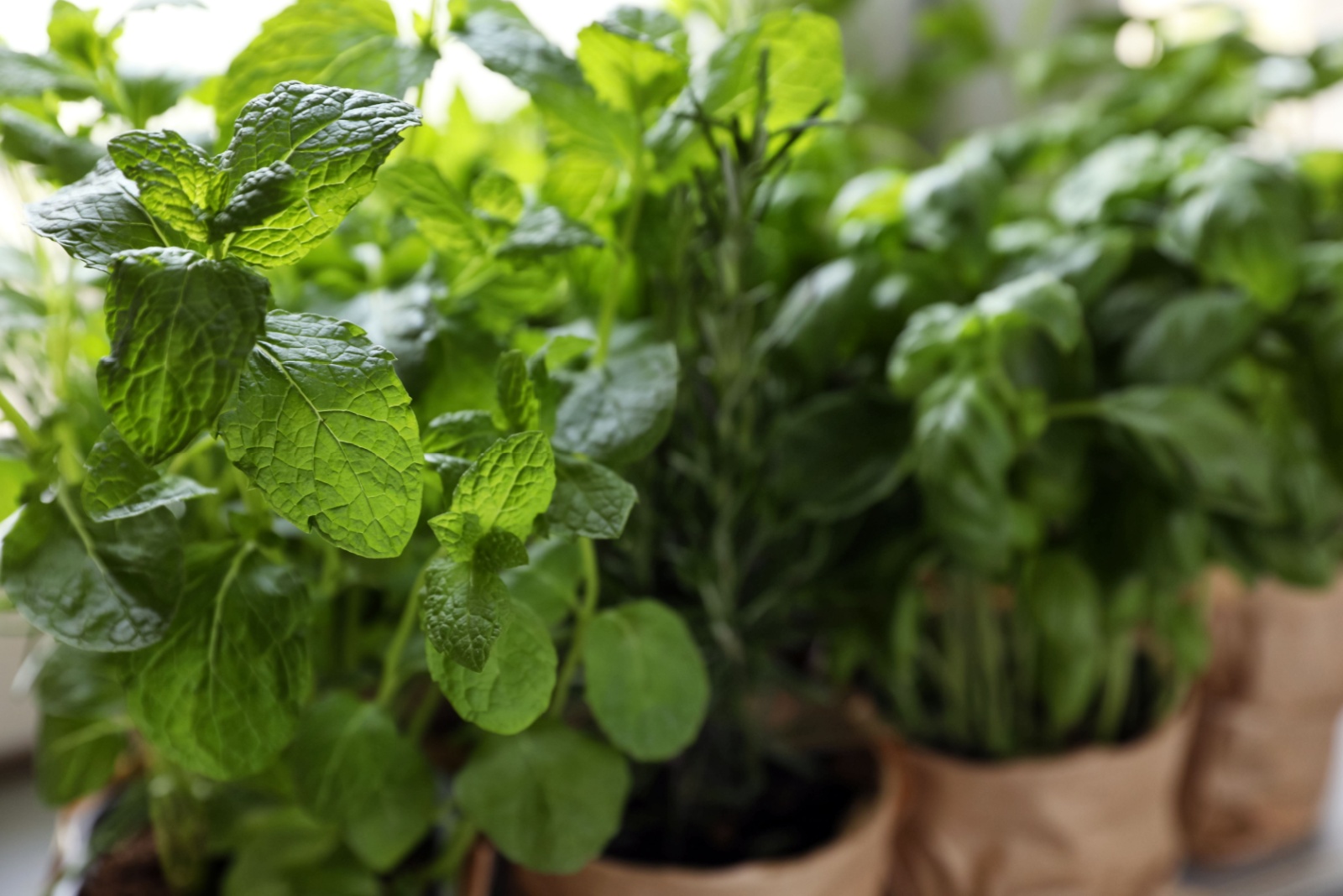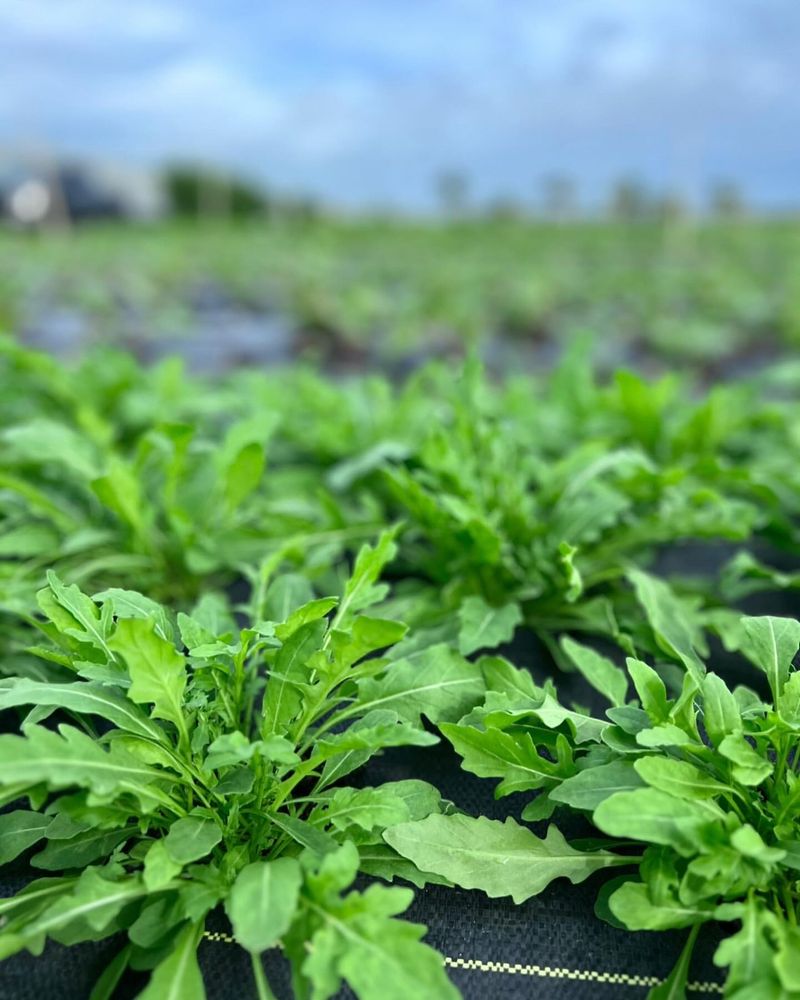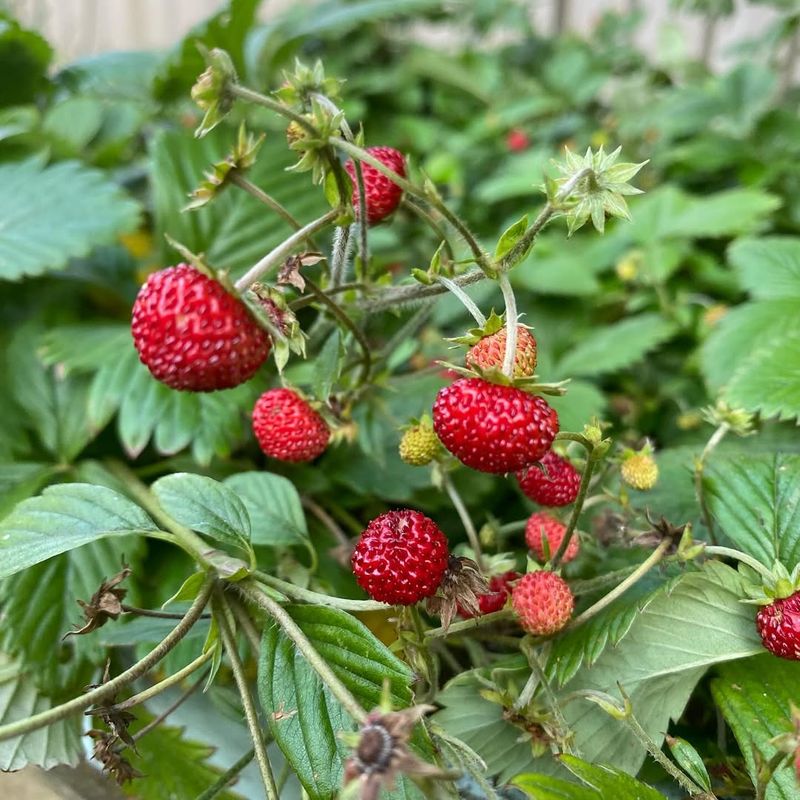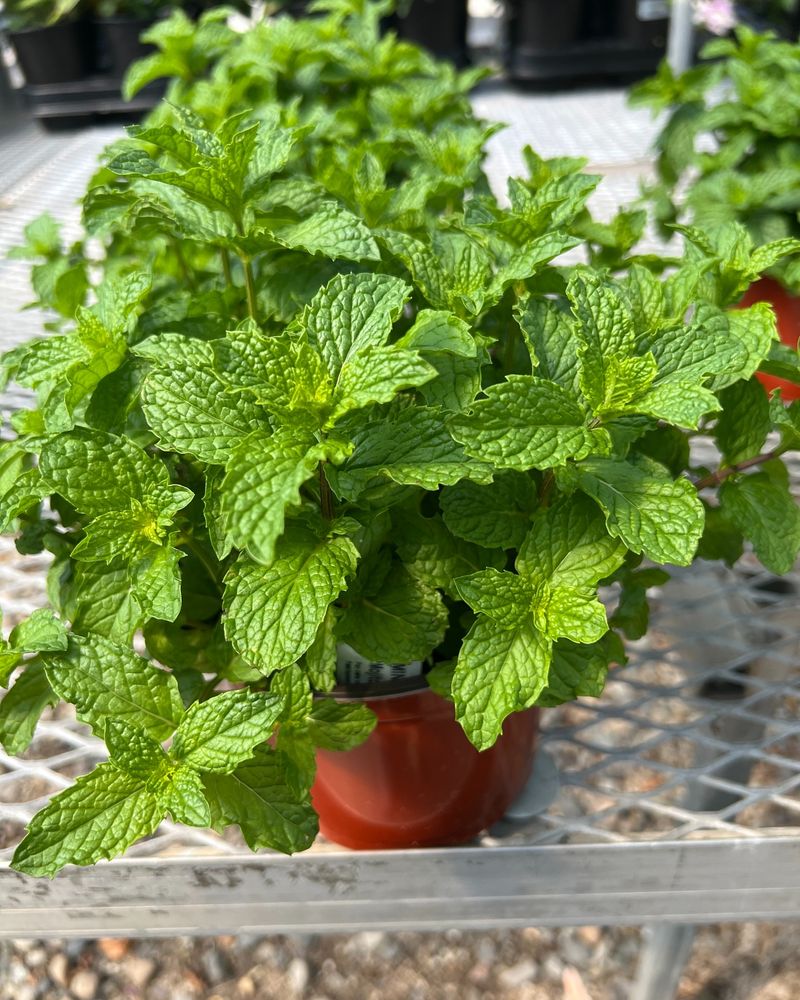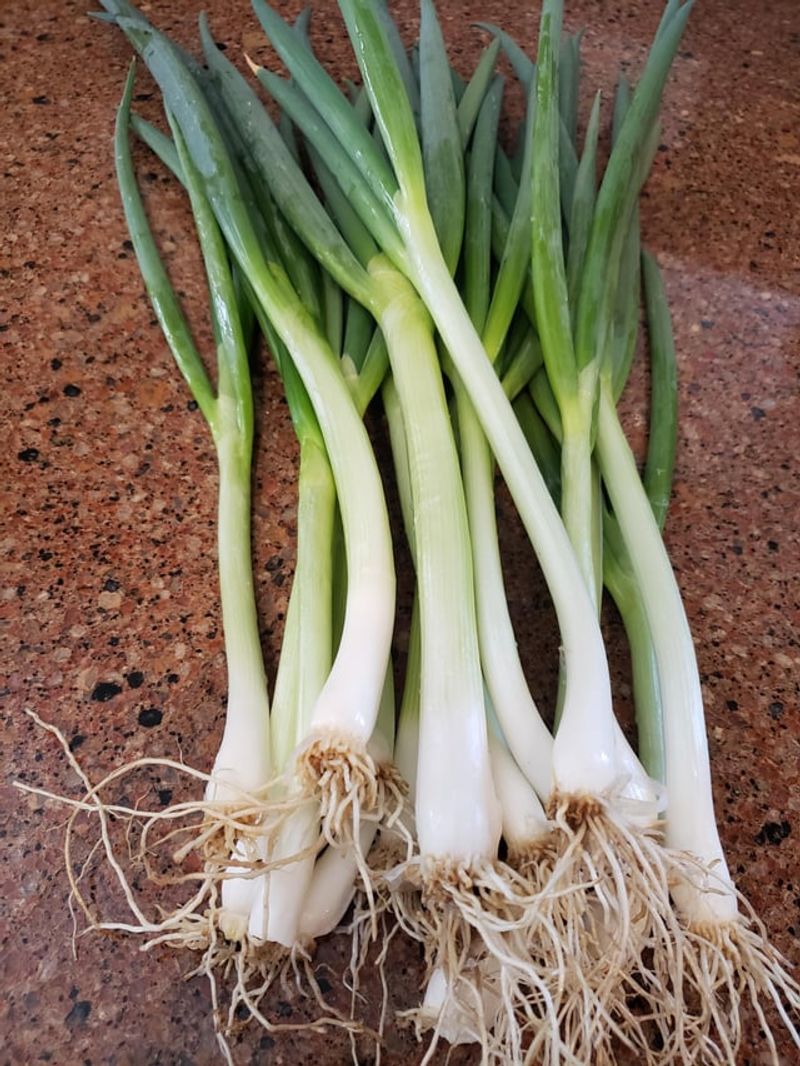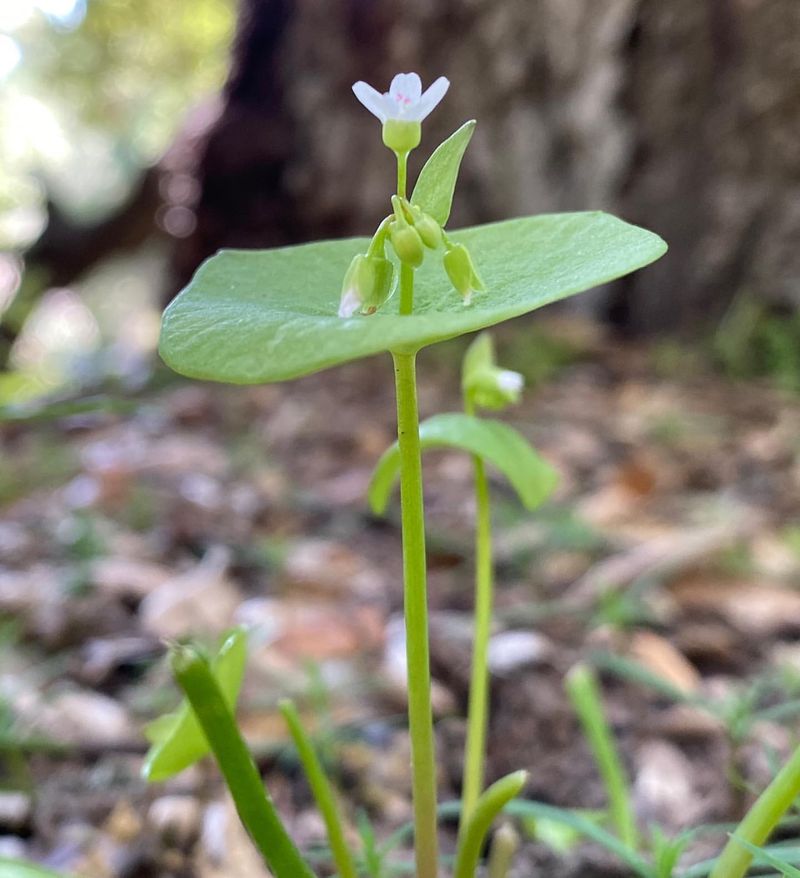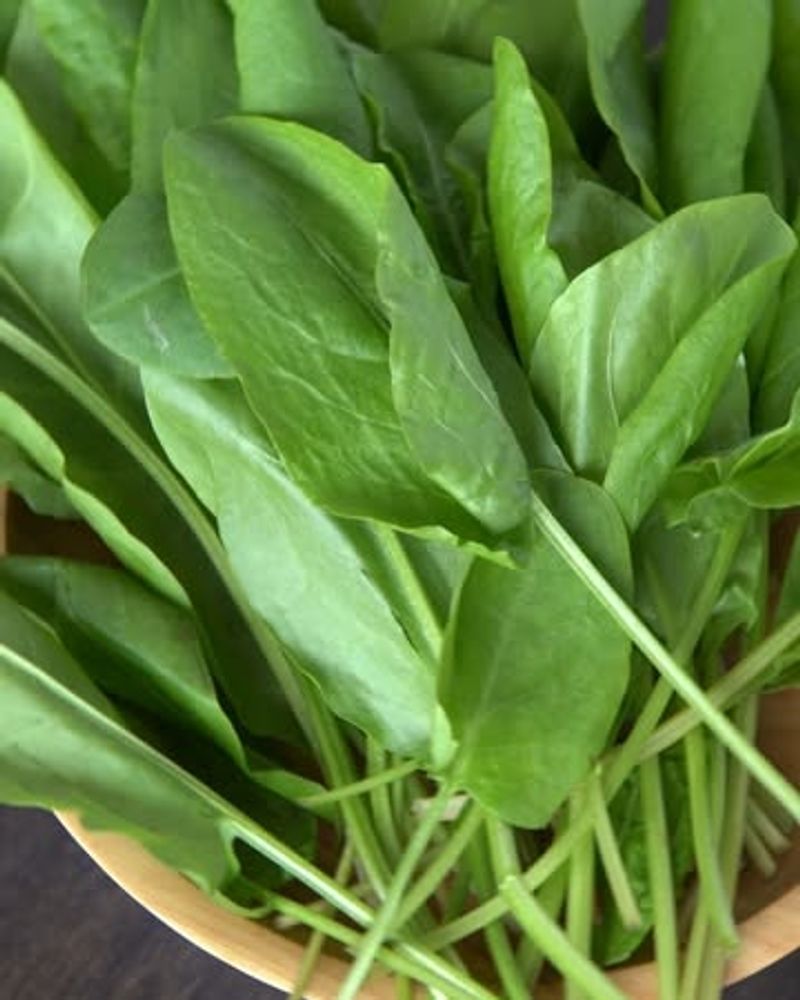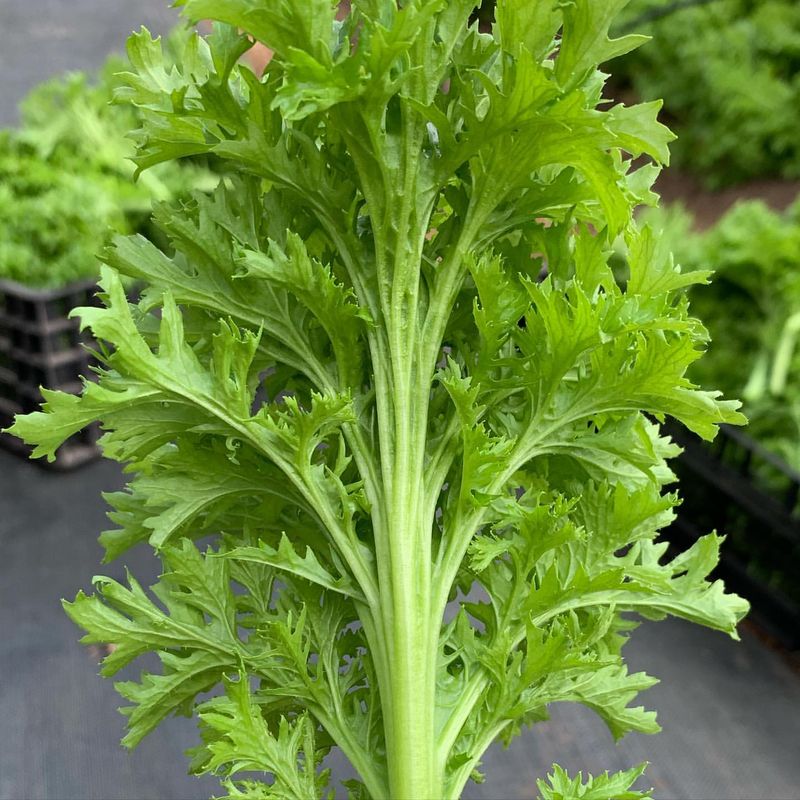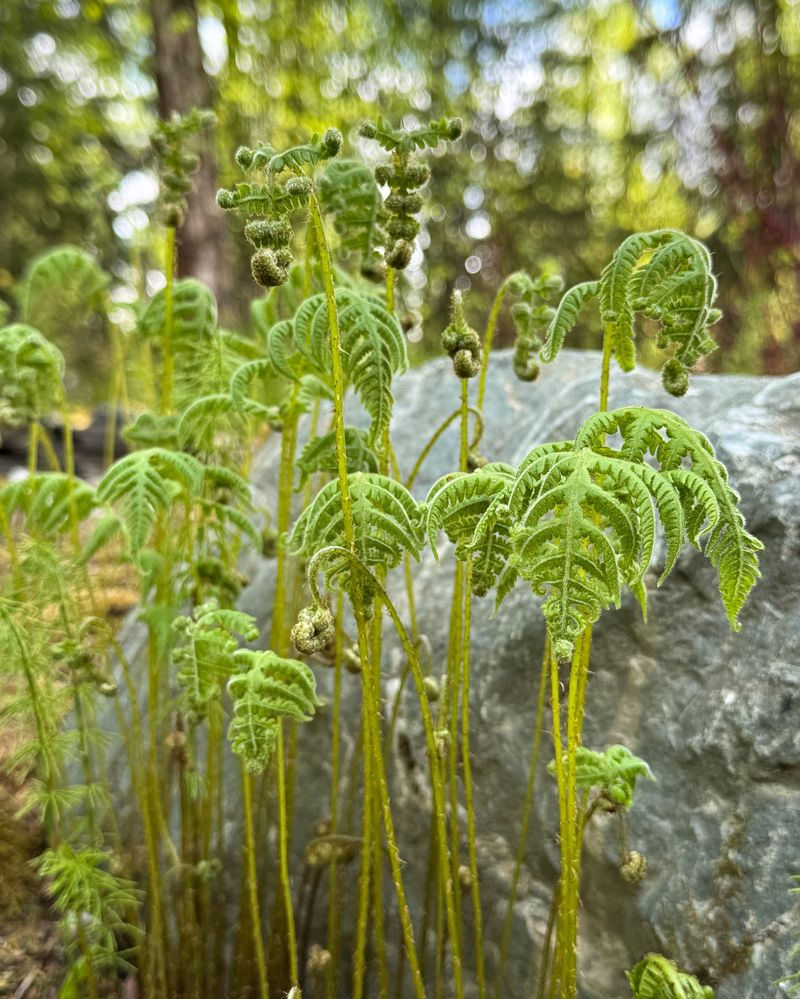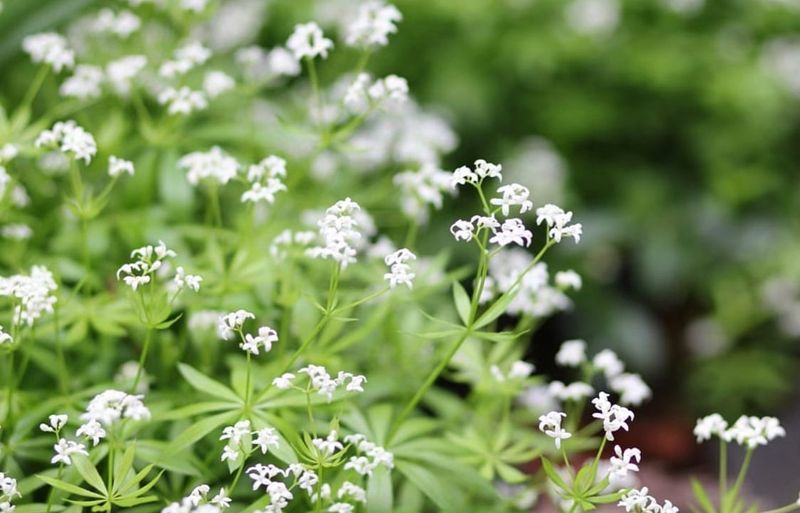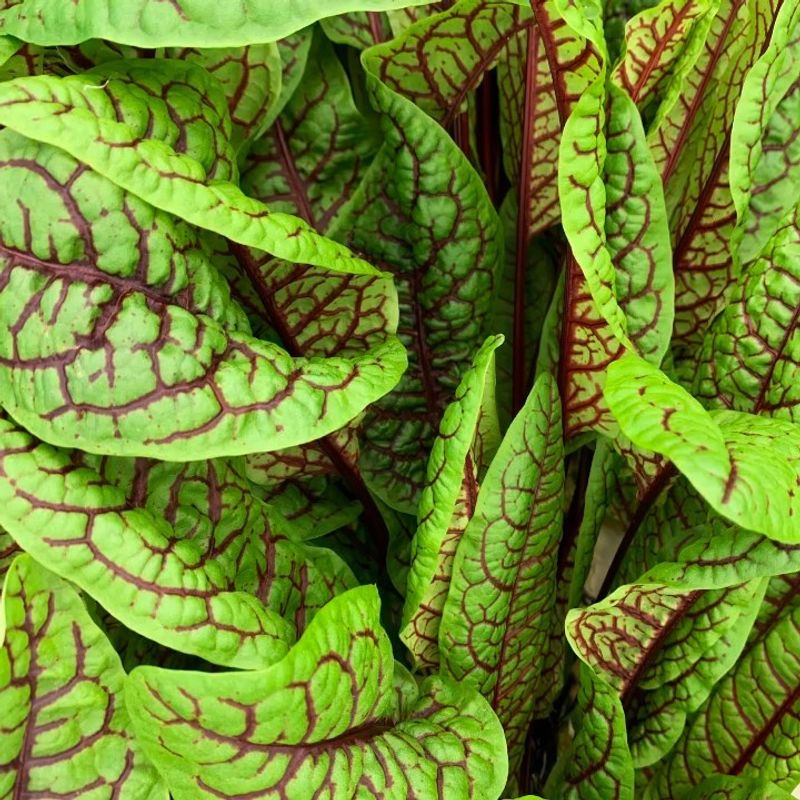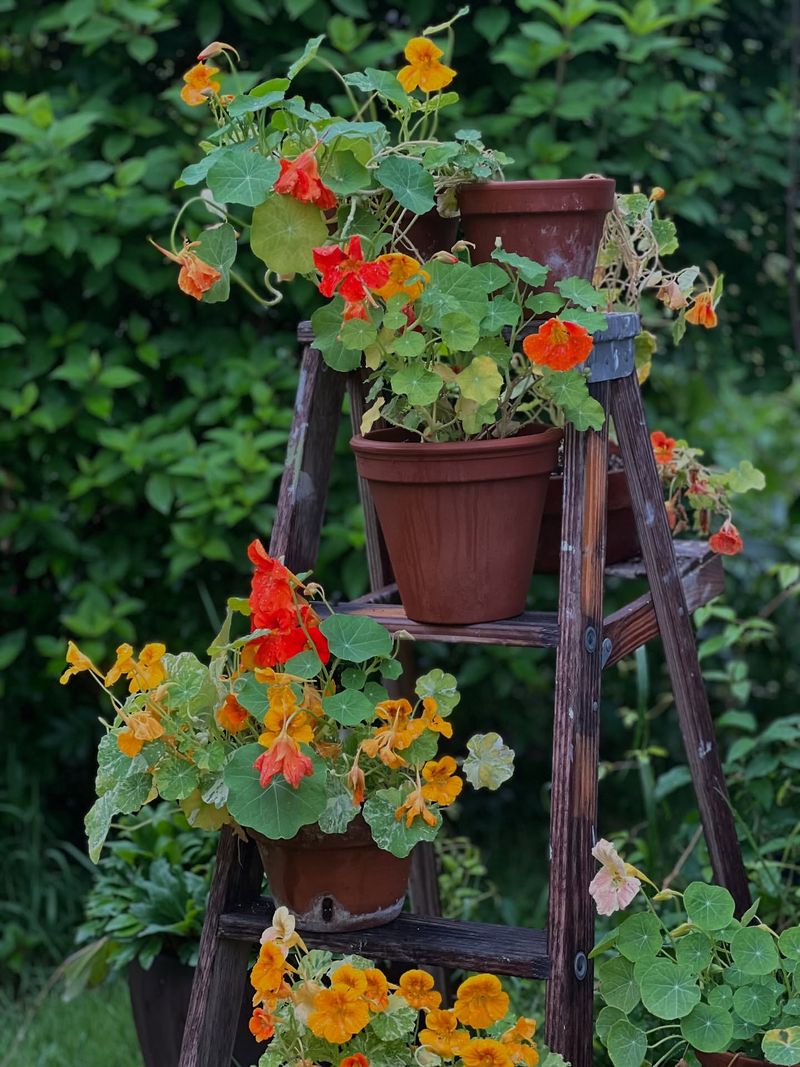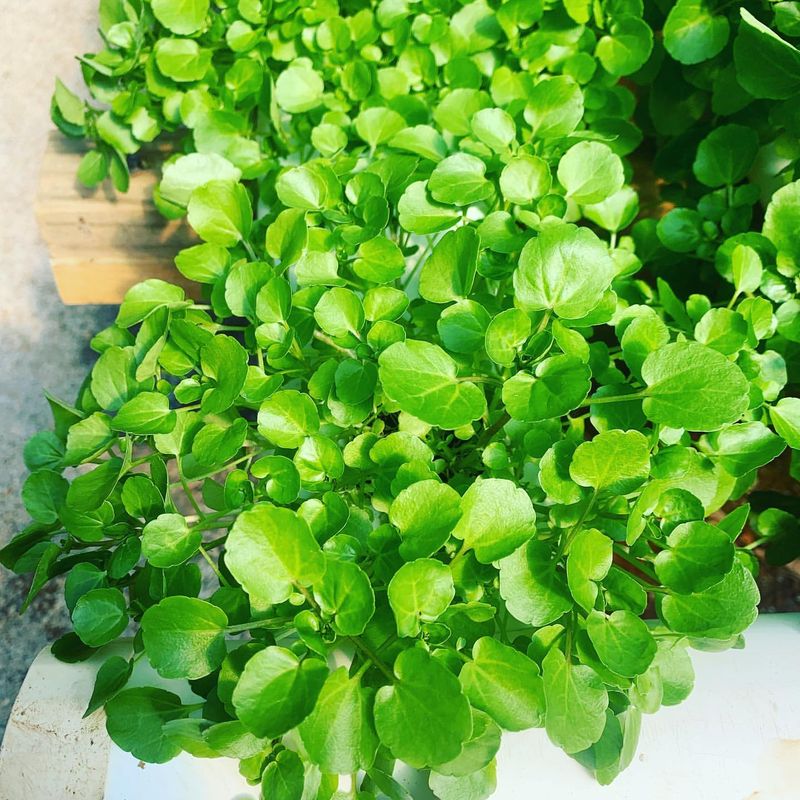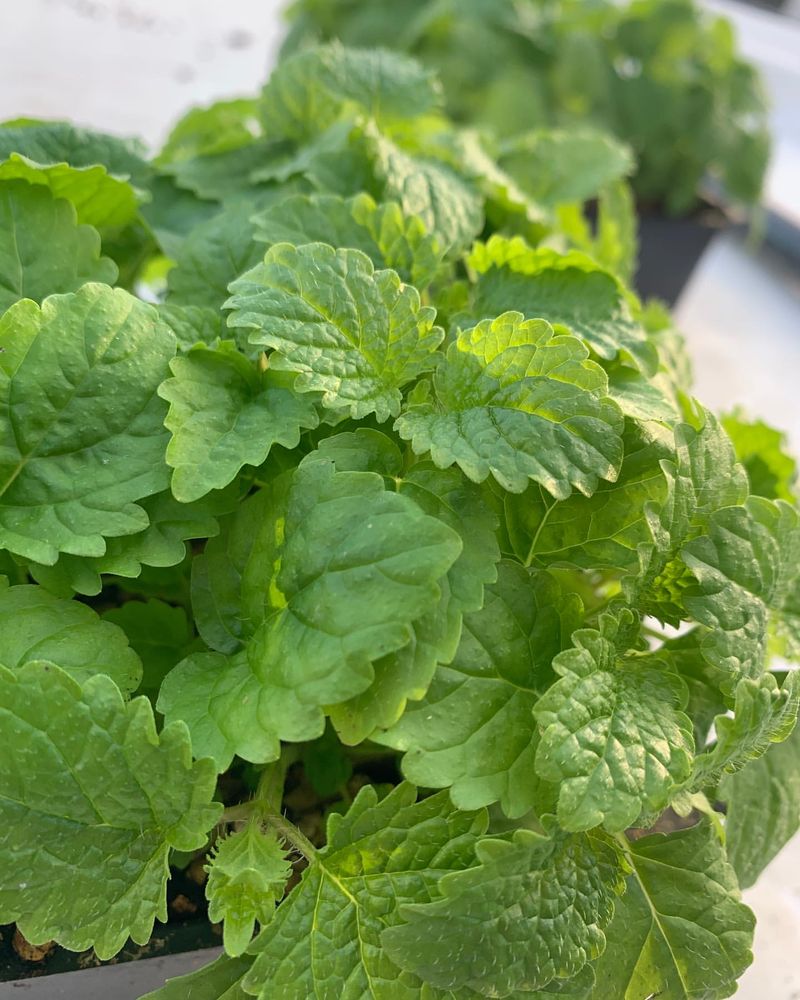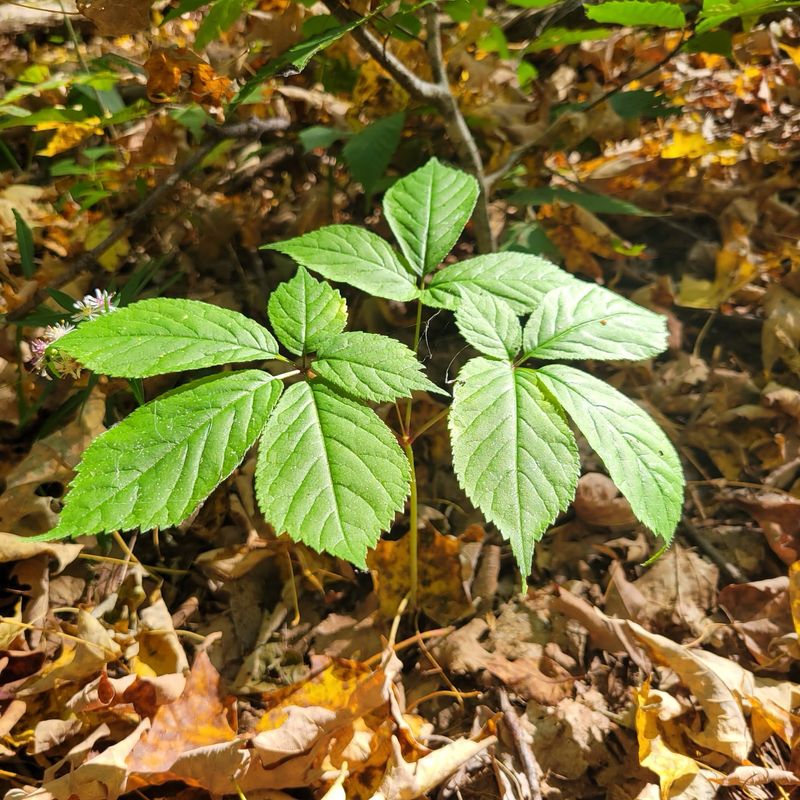Living in Washington doesn’t mean giving up on growing your own food, even if your outdoor space lacks direct sunlight. Many edible plants actually thrive in the cooler, shadier conditions common on north-facing patios, balconies, and windowsills.
With Washington’s naturally moist climate, these shade-loving edibles can turn your underutilized spaces into productive mini-gardens.
1. Wild Arugula
Spicier than its sun-loving cousin, wild arugula brings peppery flavor to any shady spot. Native to the Mediterranean but perfectly at home in Washington’s climate, this leafy green keeps producing through our mild summers and into fall.
Plant it in containers at least 6 inches deep, harvest outer leaves regularly, and enjoy continuous growth. The younger leaves offer milder flavor for salads, while mature leaves add kick to sandwiches and pizzas.
2. Alpine Strawberries
Unlike their sun-demanding cousins, alpine strawberries flourish in dappled shade on Washington patios. These petite berries pack intense sweetness into thumbnail-sized fruits that appear throughout summer.
Growing just 8-10 inches tall, they’re perfect for hanging baskets or window boxes where their runners can cascade decoratively. The plants produce without runners, staying compact for years. Their white flowers add visual appeal even before the distinctive conical red berries appear.
3. Mint Varieties
Notorious for taking over gardens, mint becomes the perfect contained companion for shady Washington balconies. Chocolate mint, spearmint, and peppermint all thrive with minimal sunlight, providing aromatic leaves for months.
Keep each variety in separate containers to prevent flavor mixing. The plants appreciate Washington’s natural moisture but need good drainage to prevent root rot. Harvest regularly by pinching stem tips to encourage bushy growth instead of the leggy stretching that happens in deep shade.
4. Japanese Bunching Onions
Far more shade-tolerant than regular onions, these upright growers provide year-round harvests from Washington’s shadiest spots. Their slender green stalks and mild onion flavor make them perfect for containers just 6 inches deep.
Plant them once and harvest for years by cutting what you need while leaving the roots intact. They’ll multiply naturally, forming clumps that can be divided when crowded. During winter, growth slows but rarely stops completely in Washington’s mild coastal areas.
5. Miner’s Lettuce
This native Pacific Northwest green practically begs for shade and cool weather. With succulent, round leaves and a mild, refreshing taste, miner’s lettuce grows abundantly in Washington’s natural woodland settings.
Extremely low-maintenance, it self-seeds readily once established in containers. The entire plant is edible from roots to tiny white flowers. Its natural growing season aligns perfectly with Washington’s rainy months, providing fresh greens when summer lettuce struggles.
6. Sorrel
Bringing lemony zing to shady spots, sorrel’s bright green leaves emerge early in Washington’s mild spring. This perennial green thrives in north-facing locations where summer heat won’t cause it to bolt and turn bitter.
French sorrel offers smaller, more refined leaves than common sorrel. Both add citrusy notes to salads and soups. Harvest outer leaves regularly and the plant will produce for years in the same container, appreciating Washington’s naturally acidic soil.
7. Wasabi
Authentic wasabi, rarely found in grocery stores, grows naturally along shaded stream banks in Japan – conditions remarkably similar to Washington’s moist, shady spaces. This luxury crop fetches premium prices but requires patience, taking nearly two years to develop its prized rhizome.
Grow in containers filled with loose, constantly moist soil. The broad heart-shaped leaves enjoy Washington’s cool temperatures and filtered light. While waiting for the valuable rhizome, harvest a few leaves and stems for milder wasabi flavor in salads.
8. Fiddlehead Ferns
Ostrich ferns, native to Washington’s woodlands, produce delectable fiddleheads each spring before unfurling into dramatic fronds. These prehistoric-looking plants thrive in the shadiest corners of patios and north-facing balconies.
Plant in deep containers with rich, acidic soil that stays consistently moist. Harvest only 2-3 fiddleheads per plant in spring when they’re tightly coiled and about 6 inches tall. After establishing for 2-3 years, a single plant can produce dozens of these gourmet treats annually.
9. Sweet Woodruff
Historically used to flavor May wine, sweet woodruff brings both culinary use and whimsical beauty to shaded Washington balconies. Its whorls of bright green leaves and delicate white spring flowers spread gently in containers.
The dried leaves offer vanilla-hay fragrance to desserts and drinks. Fresh leaves can garnish fruit salads. Plant in wide, shallow containers where it can form a living carpet. Washington’s natural rainfall usually provides sufficient moisture once established.
10. Red-Veined Sorrel
Standing out among shade-tolerant edibles, this stunning sorrel variety offers burgundy veins against green leaves. Beyond its ornamental value, it provides the same tangy lemon flavor as green sorrel but with dramatic visual appeal for Washington’s shadowy spaces.
Perfect for container edges where its colorful rosettes can cascade slightly. The plants maintain vibrant coloration even in deep shade. Harvest young leaves for salads year-round in Washington’s mild climate, as mature leaves develop stronger oxalic acid content.
11. Nasturtiums
While typically considered sun-lovers, trailing nasturtium varieties adapt surprisingly well to partial shade on Washington balconies. Their lily pad-like leaves and edible flowers in sunset hues brighten north-facing spaces while providing peppery flavor.
Both flowers and leaves are edible, offering wasabi-like zing to salads. Plant in hanging baskets where vines can cascade dramatically. They bloom less prolifically in shade but compensate with larger, more tender leaves perfect for stuffing or using as edible serving cups.
12. Watercress
Crisp, peppery watercress turns north-facing windowsills into productive hydroponic gardens. This superfood grows happily in shallow water without soil, making it perfect for Washington’s shadiest indoor spots.
Set up a simple system using recycled plastic containers with pebbles for root support. Change water weekly to prevent stagnation. Harvest stem tips regularly to encourage branching. With Washington’s cool room temperatures, indoor watercress avoids the bitterness that summer heat can cause.
13. Lemon Balm
Bringing citrusy brightness to Washington’s shadiest corners, lemon balm grows enthusiastically even with minimal sunlight. Its crinkled, aromatic leaves release fragrance with every touch, perfuming patios and balconies.
Container growing controls its naturally vigorous spread. Harvest regularly to keep plants bushy rather than leggy. Fresh leaves make calming tea and add lemony notes to fruit salads. Unlike many herbs that become bland in shade, lemon balm maintains full flavor even on north-facing balconies.
14. American Ginseng
For patient gardeners, shade-loving American ginseng offers both medicinal roots and potential income. Naturally growing in forest understories similar to Washington’s woodlands, this slow-growing native adapts well to deep containers on north-facing patios.
Plant seeds in fall using acidic, well-draining soil mixed with leaf compost. Seedlings emerge in spring but require 5-10 years before roots develop medicinal properties. The distinctive palmate leaves and red berries provide ornamental value during the waiting period.

